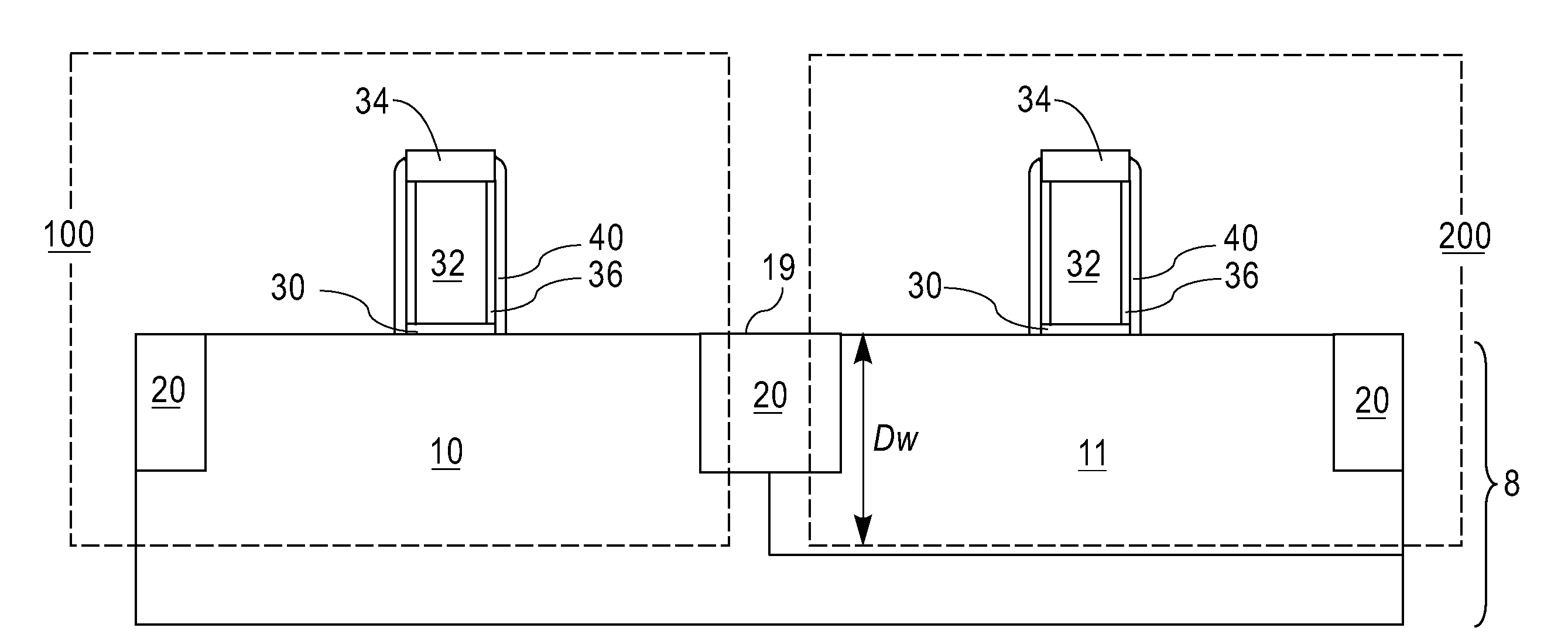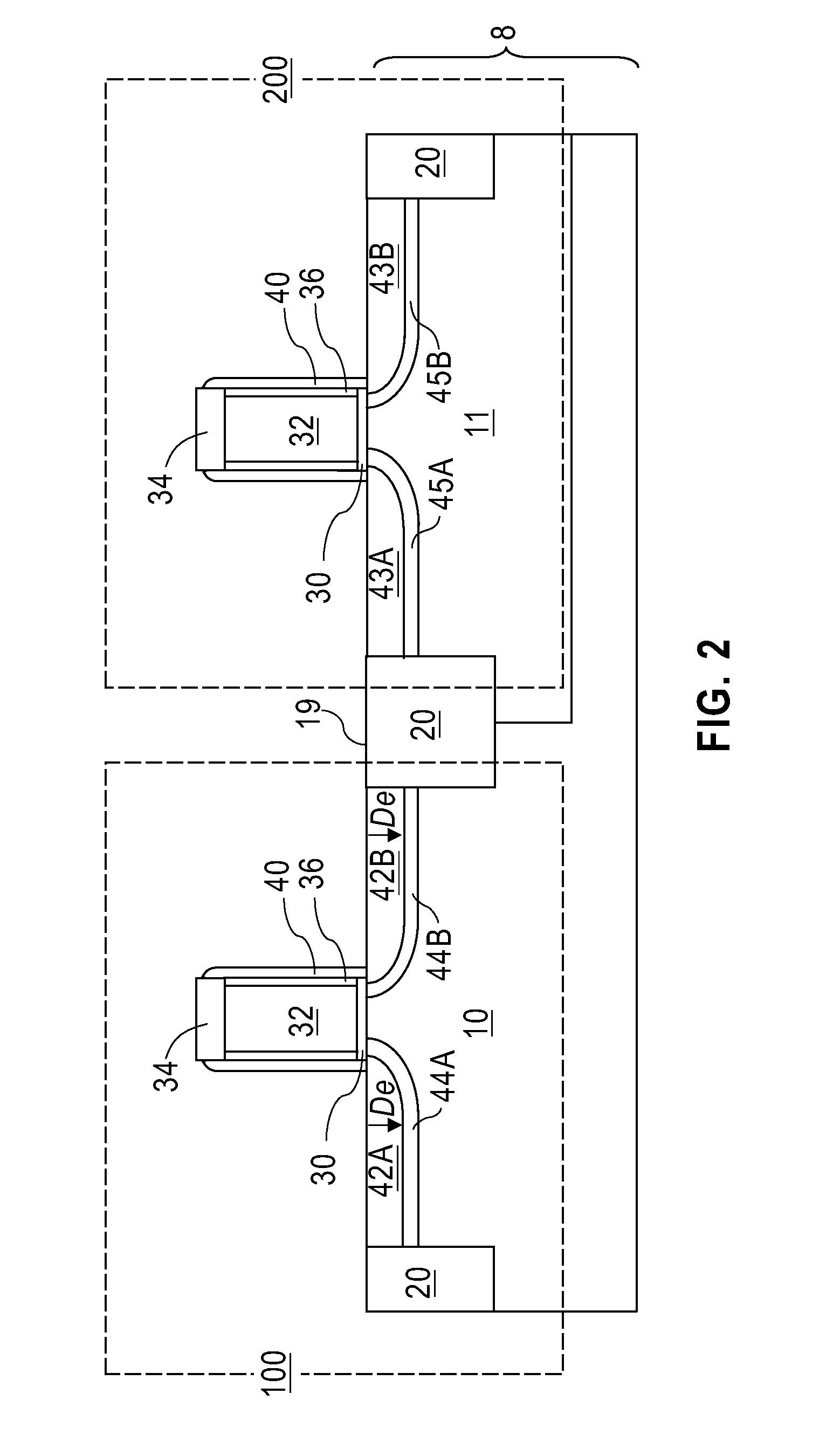Mosfet having a high stress in the channel region
a channel region and high stress technology, applied in the field of high-performance semiconductor devices, can solve the problems of linear proportionality of the amount of lateral recesses, difficult to adapt to soi devices, and difficulty in recessed regions, so as to improve the uniformity of etching, minimize loading effects, and improve control
- Summary
- Abstract
- Description
- Claims
- Application Information
AI Technical Summary
Benefits of technology
Problems solved by technology
Method used
Image
Examples
first embodiment
[0076]Referring to FIG. 1, a first exemplary semiconductor structure according to the present invention is shown, which comprises a semiconductor substrate 8 containing a first semiconductor region 10 and shallow trench isolation 20. The first semiconductor region 10 comprises a first semiconductor material having a doping of a first conductivity type at a first dopant concentration. The semiconductor substrate 8 may further contain a second semiconductor region 11 comprising the first semiconductor material and having a doping of a second conductivity type, wherein the second conductivity type is the opposite of the first conductivity type. The first semiconductor region 10 may have a p-type doping and the second semiconductor region 11 may have an n-type doping, or vice versa. Typically, the second semiconductor region 11 comprises a well extending from a top surface 19 of the semiconductor substrate to a well depth Dw into the semiconductor substrate 8.
[0077]The first semiconduct...
second embodiment
[0108]Referring to FIG. 10, a second exemplary semiconductor structure according to the present invention is derived from the first exemplary structure in FIG. 1. A dummy first source extension region 12A, a dummy first drain extension region 12B, a second source extension region 43A, and a second drain extension region are formed in the semiconductor substrate 8 by ion implantation of dopants of the first conductivity type. Thus, the first semiconductor region 10, the dummy first source extension region 12A, and the dummy first drain extension region 12B have the first conductivity type doping. The dopant concentration of the dummy first source extension region 12A and the dummy first drain extension region 12B is substantially higher than the first dopant concentration. The dopant concentration of the dummy first source extension region 12A and the dummy second drain extension region 12B may be from about 3.0×1018 / cm3 to about 3.0×1021 / cm3, and typically from about 3.0×1019 / cm3 to...
PUM
| Property | Measurement | Unit |
|---|---|---|
| lattice constants | aaaaa | aaaaa |
| lattice constants | aaaaa | aaaaa |
| thickness | aaaaa | aaaaa |
Abstract
Description
Claims
Application Information
 Login to View More
Login to View More - R&D
- Intellectual Property
- Life Sciences
- Materials
- Tech Scout
- Unparalleled Data Quality
- Higher Quality Content
- 60% Fewer Hallucinations
Browse by: Latest US Patents, China's latest patents, Technical Efficacy Thesaurus, Application Domain, Technology Topic, Popular Technical Reports.
© 2025 PatSnap. All rights reserved.Legal|Privacy policy|Modern Slavery Act Transparency Statement|Sitemap|About US| Contact US: help@patsnap.com



